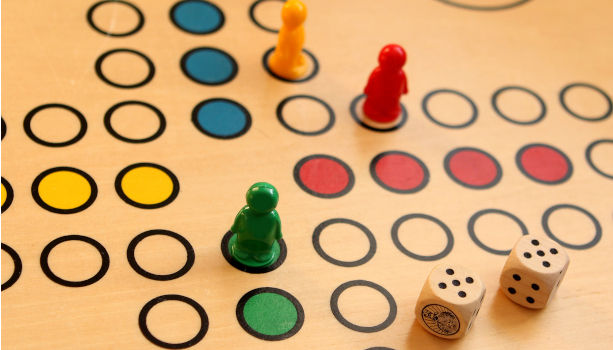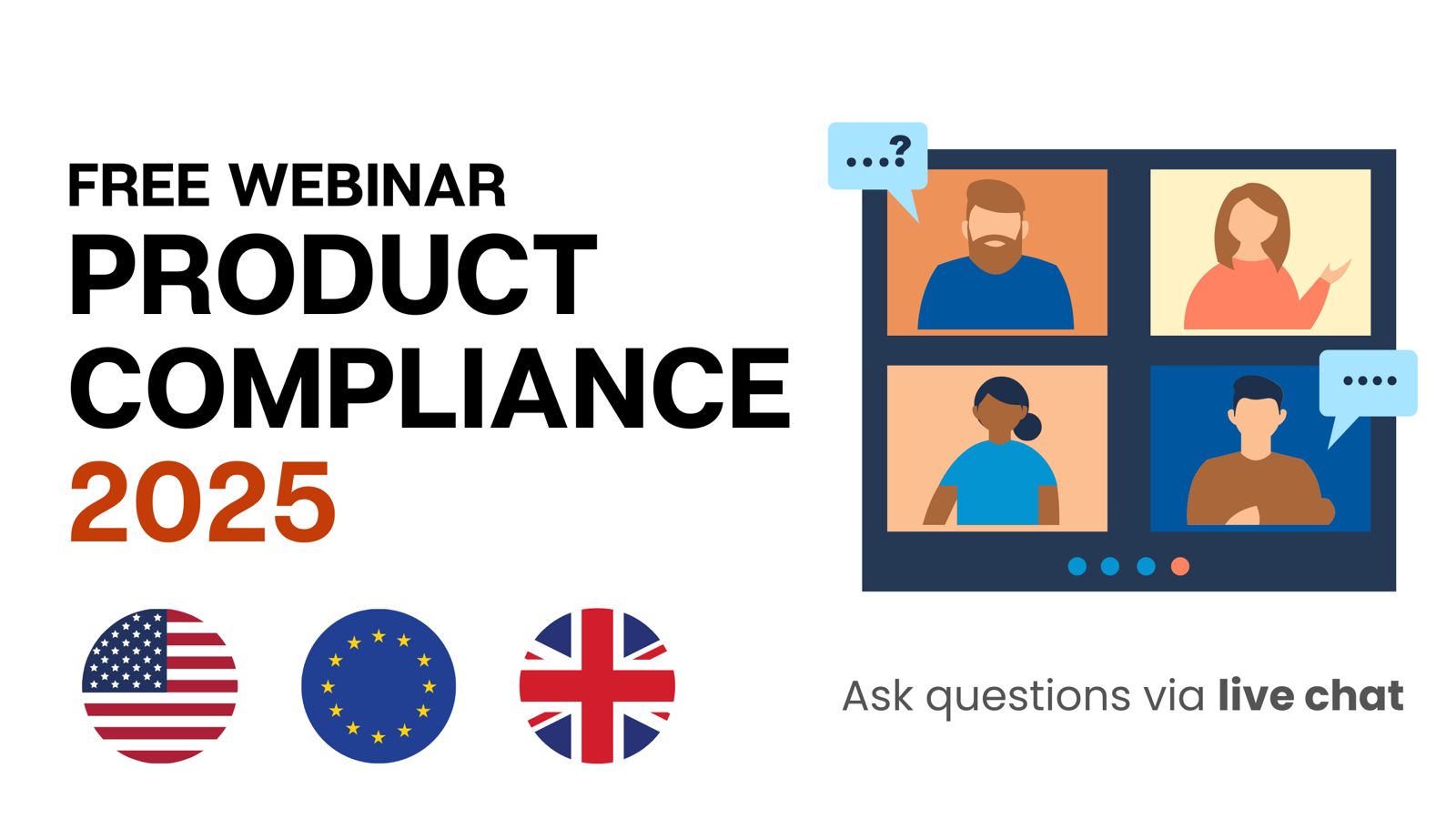
Board games imported to or manufactured in the United States are subject to various safety standards, bans, substance restrictions, certification, labelling, and testing requirements. The applicable requirements also depend to a large extent on whether the board game is intended for children or not.
In this guide, we explain what you must know about the Consumer Product Safety Improvement Act (CPSIA), the Lacey Act, ASTM standards, and other requirements relevant to board games sold in the United States.
Content Overview

FREE CONSULTATION CALL (US, EU & UK)
- Request a free 30-minute call with Ivan Malloci to learn how we can help you with:
- Find product requirements
- Certification and labeling
- Lab testing
Board Games for Children – Consumer Product Safety Improvement Act (CPSIA)
The Consumer Product Safety Improvement Act (CPSIA) regulates the safety of products for children aged 12. This also includes board games that are generally considered to be suitable for this age group.
Importers and manufacturers must comply with CPSIA requirements, such as:
a. Adhering to relevant children’s product safety rules concerning mechanical, chemical, and electrical safety
b. Having their board game product lab tested by a third-party CPSC-accepted accredited lab
c. Providing a Children’s Product Certificate as proof of product compliance
d. Affixing a tracking label to their product and packaging
Standards
There are several CPSC standards that are relevant to board games. Some of those standards also incorporate ASTM standards by reference. Here we provide some examples.
| CPSC standard | Description |
| 16 CFR part 1250 (Children’s toys) | Mandates compliance with ASTM F963 toy safety standard requirements |
| 15 USC Section 1278a (Children’s products; lead paint rule) | Prohibits children’s products from containing lead in paint. |
| 16 CFR Part 1307 (Phthalates) | Restricts phthalates (specifically DEHP, DBP, BBP, DINP, DIBP, DPENP, DHEXP, and DCHP) in children’s toys and childcare products to a maximum of 0.1%. |
| 16 CFR Part 1501 (Small parts) | Bans small parts, and products containing small parts, meant for children aged under 3 years because of breathing |
Board games for 0 – 3 years old and small parts ban
16 CFR Part 1501 prohibits small parts and products containing small parts meant for children aged under 3 years. This includes board games, such as puzzles.
Specifically, this part prohibits parts that are small enough to fit in the cylinder that has the dimensions specified in 1501.4. The definition of small parts also cover parts that can be broken off from other parts – thus forming small parts.
As such, small parts are prohibited in board games for 0 to 3 year olds.
Board games for 3 – 6 years old and small parts warnings
Certain children’s products that are or contain small parts, balloons, small balls, or marbles must be labeled to warn consumers not to buy them for children under a certain age.
16 CFR Part 1500.19 sets requirements for certain children’s products, for example products that contain small parts or small balls. These products should contain a warning label that explain that you should not buy the products for children that are under a certain age. Here are some examples of these labels:
a. “WARNING: CHOKING HAZARD — Small parts. Not for children under 3 yrs.”
b. “WARNING: CHOKING HAZARD — Toy contains a small ball. Not for children under 3 yrs.”
c. “WARNING: CHOKING HAZARD — Toy contains a marble. Not for children under 3 yrs.”
Here are some examples of board games that may require such warnings:
- Board games with marbles
- Bouncing ball board shot game
Board games for 3-8 years old and small part warnings
According to 16 CFR Part 1500.19, products intended for children aged between 3 to 8, and that contain either a small ball or marble, must bear warning statements as it follows:
a. “WARNING: CHOKING HAZARD — Toy contains a small ball. Not for children under 3 yrs.”
b. “WARNING: CHOKING HAZARD — Toy contains a marble. Not for children under 3 yrs.”
Here are some examples of such games:
- Marble maze
- Sticky ball dart board game
Board games for 8-12 years old and latex balloon warnings
Always according to 16 CFR Part 1500.19, there is a specific warning for games that contain latex balloons:
“WARNING: CHOKING HAZARD — Children under 8 yrs. can choke or suffocate on uninflated or broken ballons. Adult supervision required.
Keep uninflated balloons from children.
Discard broken balloons at once.”
This warning would be relevant to board games such as “Wack a balloon strategy board game”.
Children’s Product Certificate (CPC)
You must issue a Children’s Product Certificate (CPC) if you import or manufacture children’s products in the United States. This certificate indicates that the product complies with relevant CPSIA requirements (e.g. small parts, phthalates), and may be requested by the:
- US customs
- CPSC
- State authorities
- Retailers
- Online e-commerce websites
Tracking label
Importers and manufacturers of children’s products must affix tracking labels to their products.
The CPSC’s guidance page on Tracking Label Requirement for Children’s Products explains that if a toy is composed of many pieces that are meant to be kept on a box or similar packaging, then it is not necessary to label every single piece. Instead, you can affix the tracking label only to the box.
Board Games for Adults – General information
While regulations for board games intended for children are generally more strict, board games intended for adults are also regulated. There are regulations and standards that cover general consumer products for all age groups.
Here are some examples:
- 16 CFR Part 1262 – Safety Standard for Magnets
- 19 CFR Part 134 – Country of Origin Marking
- 7 CFR Part 319 Subpart I (Wooden handicraft)
- Toxic Substances Control Act
- Uniform Packaging labeling Act (UPLA)
- Fair Packaging and Labeling Act
How do I know if a board game is for children or adults?
It is often difficult to decide if a board game is meant for adults, children, or both.
For example, the CPSC deems traditional board games, such as chess or backgammon, to be equally attractive to both adults and children. As such, versions of these games that appeal to a “general audience” are not considered as children’s products. This could be, for example, a simple chess board in white and black colors. However, if the product’s design is more child-friendly (e.g. having features that are appealing to children), then the product may be considered a children’s product.
The CPSC has set guidelines to help you assess if your product is meant for adults or children. We cover this topic in the next section.
Note that, if the CPSC deems your product to be a children’s product, you need to comply with the CPSIA requirements, even if you intend to sell your products only to adults. Non-compliant products can be subjected to recalls, fines, and other actions.
What are the factors to decide if a board game is meant for children?
According to the CPSC guidance page on “Children’s Products”, these are the main factors in deciding if a product is meant for children:
Factors
a. A statement by the manufacturer about the intended use or age suitability
b. Whether the product is represented as appropriate for use by children (e.g. in marketing material)
c. Whether the product is generally recognized as a children’s product
d. The “Age Determination Guidelines published by the CPSC”
Other characteristics
Additionally, the CPSC explains that there are additional factors. For example, if a product contains any of the following characteristics, it may be considered as a children’s product:
a. The product is unnecessarily small for adults to use
b. The product’s features (e.g. buttons) are exaggeratedly large and simple
c. The product has safety features more commonly found on children’s products
d. The product’s colors are bright and geared toward children (e.g. bright primary colors)
e. The product has decorations evocative of childhood (such as puppets)
f. The product’s features enhance its marketability, but not its function, toward children
g. The product has play value and is meant to entertain children aged under 12
As such, companies cannot arbitrarily classify a board game as suitable for adults and thereby ignore the stricter requirements that apply to board games for children.
16 CFR Part 1262 – Safety Standard for Magnets
16 CFR Part 1262 is a safety standard that establishes requirements for products that contain loose magnets designed, marketed, or meant for the following purposes:
- Entertainment
- Stress relief
- Mental stimulation
Thus, this could potentially also include board games, even if these are not intended for children. However, the standard exempts children’s toys subject to 16 CFR Part 1250, and consequently, ASTM F963.
Flux index value
The standard requires that loose magnets have a flux index of less than 10 kg2 mm2 if these fit in the cylinder specified in 16 CFR Part 1501.4.
General Certificate of Conformity (GCC)
Importers and manufacturers of non-children’s products, which might include board games, must create and issue one General Certificate of Conformity (GCC) per product.
GCC overview
- Product name and description
- List of applicable CPSC safety rules and ASTM standards
- Your company name
- Contact details: Mailing address, e-mail address, phone number
- Name of the person holding the test report
- Date (month, year) and place (city, country) of production
- Date (month, year) and place (city, country) of product testing
- Third-party testing company, contact person, e-mail, phone number, and address
Note that you can find GCC samples on the CPSC website.
Lab Testing
You should have your product lab-tested to verify if your board game product complies with relevant regulations, standards, or requirements. The test report issued as a result can then, assuming the board game passes the test, be used to support that your product is safe and compliant.
The table below briefly provides some examples of tests relevant to board games.
| Standard | Lab testing |
| 16 CFR part 1250 |
|
| 16 CFR part 1307 | Test Method: CPSC-CH-C1001-09.4 – Standard Operating Procedure for Determination of Phthalates |
| 16 CFR part 1501 |
|
| 16 CFR part 1262 |
|
Recalls
The CPSC can issue recalls for non-compliant products, including board games, that pose potential harm to customers. For example, choking and internal perforation by magnets. Here we list some examples of such recalls and their associated risks.
- Magnetic chess games – internal perforation caused by magnets
- Magnolia Toy Mushroom Peg Sorters – choking hazard for young children
- Cadoo board games – excessive lead exposure, violating lead paint standard
- Ribbit board games – lead exposure risk
- Pirate coffee table game – lead poisoning for young children
Examining previous board game recalls can be helpful when assessing potential safety hazards for various age groups.
Board game testing companies
Here are some lab testing companies that are CPSC accepted to test against the requirements of 16 CFR Part 1250 – Safety Standard Mandating ASTM F963 for Toys:
- Intertek
- Bureau Veritas
- SGS
- TÜV Rheinland
- QIMA
These companies can, generally speaking, also offer other testing services relevant to board games.
Additional requirements
Here we list additional regulations that are relevant to board games or similar products.
| Regulation | Description |
| 19 CFR Part 134 – Country of Origin Marking | The board game or its packaging must contain a label that indicates the country of origin (e.g. Made in China). |
| Toxic Substances Control Act | The Toxic Substances Control Act mainly sets substance restrictions and reporting requirements for articles.
Thus, you must ensure that your board games don’t contain restricted substances above the limit (e.g. PBT). |
| 7 CFR Part 319 Subpart I (Wooden handicraft) | 7 CFR Part 319 Subpart I sets import permit, labeling, and other requirements for wooden handicrafts. Thus, if your board game contains wooden parts, you must comply with its requirements |
| Lacey Act | If a board game contains wood or other plant products, you may be required to file a Lacey Act declaration with the USDA APHIS, and comply with other relevant requirements. |
| California Proposition 65 | California Proposition 65 sets substance restrictions for consumer products. Board games may contain phthalates, heavy metals, and other substances restricted by California Proposition 65. |
Recommended articles
- Country of Origin Requirements in the United States: An Overview
- Toxic Substances Control Act (TSCA) for US Importers: A Complete Guide
- Wood & Bamboo Product Regulations in the United States: A Complete Guide
- Lacey Act Guide for US Importers and Manufacturers
- California Proposition 65 Guide for US Importers & Amazon Sellers
















